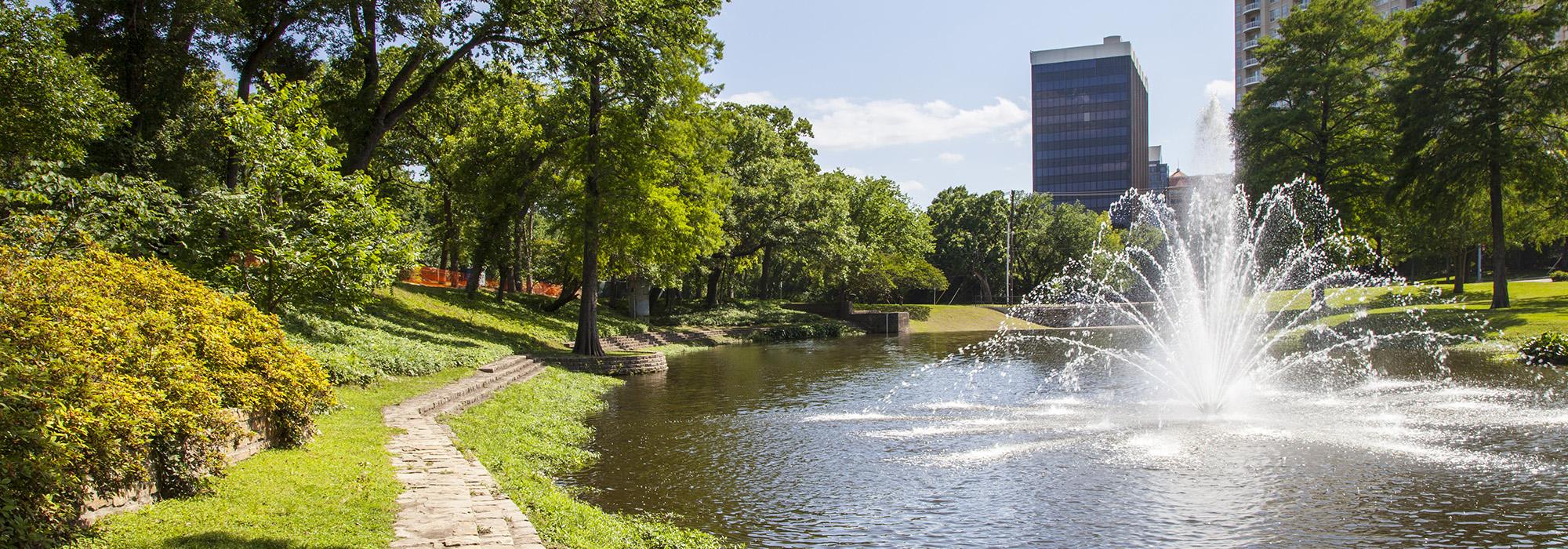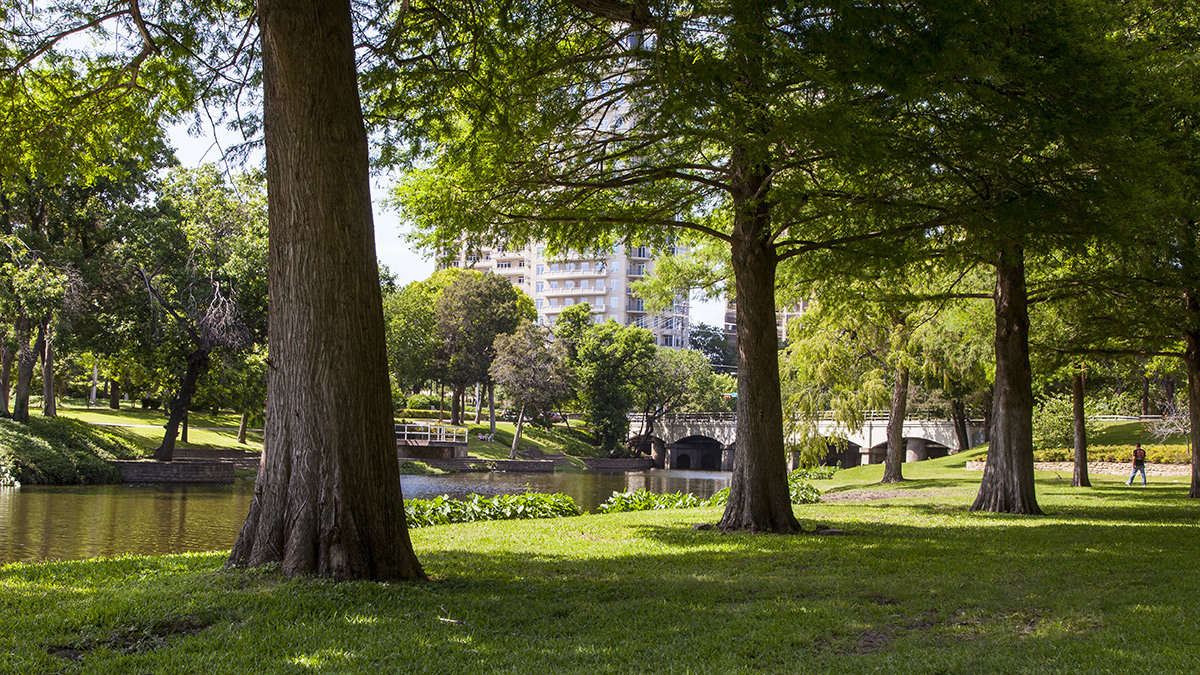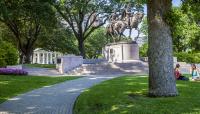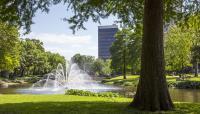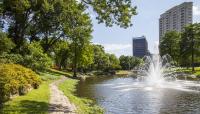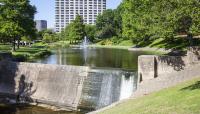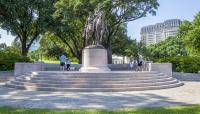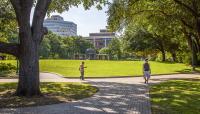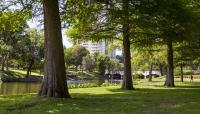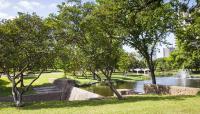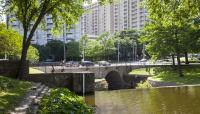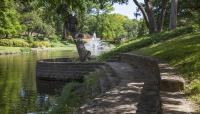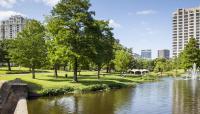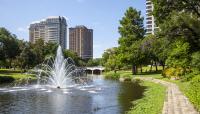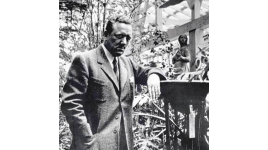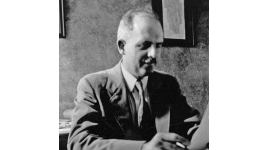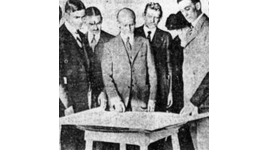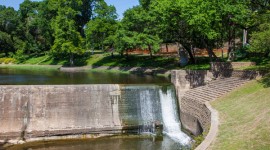Landscape Information
Originally named Oak Lawn Park, the seventeen-acre park was first developed in 1903 by the Dallas Consolidated Electric Railway Company in cooperation with developers William H. Lemmon and Oliver P. Bowser. Built as a private amenity for residential development, the wooded area became so popular that the City purchased it in 1909 to serve as the first public park in North Dallas.
The park was renamed Robert E. Lee Park in 1936, after President Franklin Delano Roosevelt dedicated a statue of General Lee, erected along Turtle Creek Boulevard on the park’s southern edge. A three-quarter-scale replica of Arlington Hall, the Custis-Lee’s Mansion in Arlington, Virginia, was constructed in 1939, likely with Works Progress Administration support. In 1940, landscape architects Hare & Hare created a plan incorporating the incremental improvements and WPA projects of the 1930s into a unified design.
Two distinct sides of the park have evolved, bisected by Turtle Creek Boulevard. The western side remains focused on Arlington Hall and is defined by manicured lawns and formal planting beds. The Hare & Hare plan has been significantly altered by contemporary additions and parking that serves the many events held there. The eastern side retains its Arts and Crafts character and is focused on the dammed Turtle Creek, which forms a lake bordered by picturesque paths and plantings and 1930s roque (croquet) lawn and shuffle board courts. The central feature of the lake is the Hibiscus Fountain, a memorial to Southern Heroes of War, designed by Dallas landscape architect Joe Lambert Jr. In the summer of 2017, the statue of Robert E. Lee was removed following nationwide turmoil surrounding the role of Confederate monuments in public spaces.



